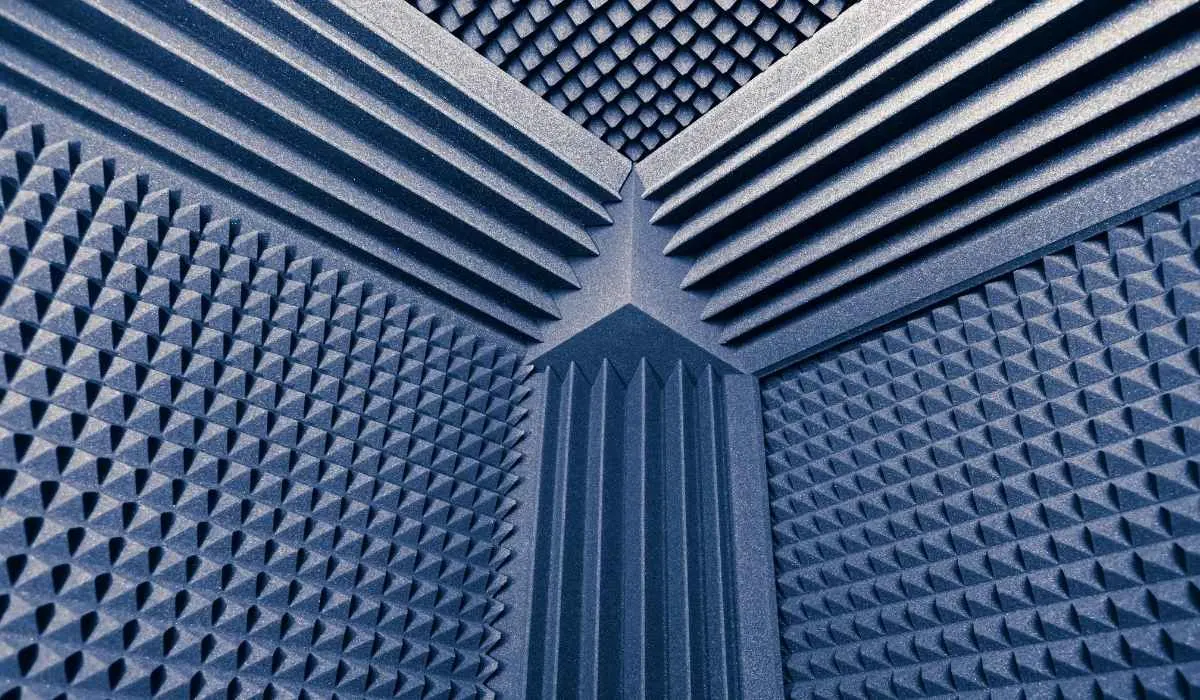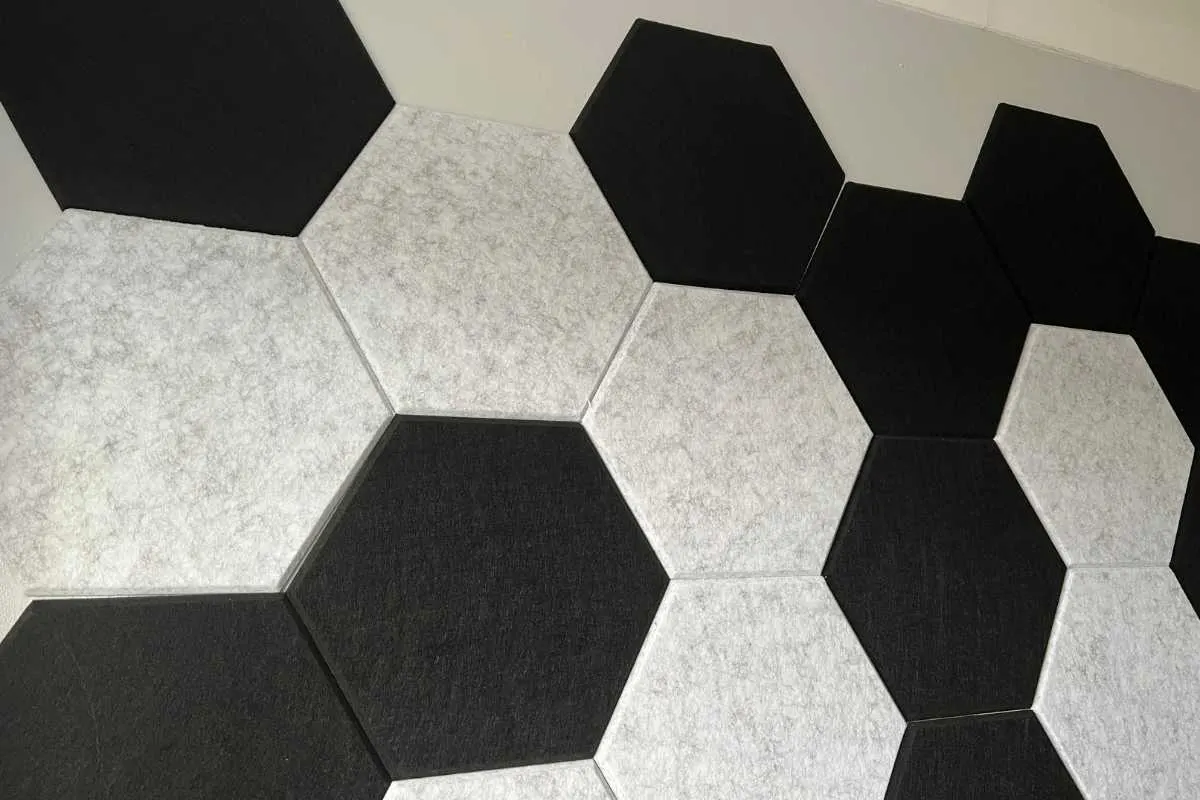Acoustically treating a room is essential if you want to make it sound as good as possible. One of the most popular items used for this purpose is acoustic panels – but do they really work?
By absorbing sound waves and preventing reflection, acoustic panels can be highly effective at improving the overall sound of a space. The panels must be of decent quality and used correctly to prevent acoustic issues that commonly occur in a room.
Soundproofing a room with acoustic panels doesn’t just prevent noise from escaping – it also improves the sound that you experience when inside the space. This can make it easier to hear people talking or make music sound better by minimizing reflections and problem frequencies.
This guide will discuss how effective acoustic panels are, what they can be used for, and whether any specific types get the best results.
How Effective Are Acoustic Panels?
With so many options available for soundproofing and improving the acoustic properties of a room, it can be difficult to know what is effective and what is nothing more than a gimmick.
Acoustic panels are one of the most commonly used forms of soundproofing, and they’ve been around for decades. They are designed for several purposes, which include:
- Absorbing sound waves to prevent noise from escaping
- Preventing sound reflection
- Minimizing bass traps
- Reducing problem frequencies
You can achieve the above results in a small to medium-sized space with just a few high-quality acoustic panels. Larger rooms will require more acoustic panels to be effective.
Acoustic panels will improve the sound quality if you’re setting up a home theater or a room for listening to music. They will also prevent noise from escaping and disturbing people in other nearby rooms.
Likewise, they can be effective in environments where lots of people are likely to be gathered. When many people talk at once, it can cause a build-up of sound waves that makes it difficult to hear.
Acoustic panels can effectively absorb the sound frequencies produced by people talking so that they don’t reflect off other walls and surfaces and therefore are easier to hear.

Where Can You Use Acoustic Panels?
Acoustic panels can be invaluable to recording studios, rehearsal rooms, and other music-related spaces. They’re great for minimizing any spill from leaving the room, and they can make your speakers, amps, and instruments sound much clearer.
Most professional recording studios will have some form of acoustic paneling on the walls to improve the sound.
Additionally, they can also be useful in warehouses, restaurants, theaters, and any other setting where a lot of noise is likely to be produced.
Choosing the right type of acoustic panels for the space is important. The smaller square panels that you’re likely to find in a music rehearsal space are not ideal for a large bar or restaurant.
Industrial acoustic panels are often placed on the ceiling and prevent sound waves from reflecting freely around the space. When many people are talking at once, the sound waves can collect and become much louder, making it difficult for people to have conversations, which you’ll want to avoid in a social space.
Another thing to keep in mind when choosing acoustic panels is how they will suit the aesthetics of a space. A minimalist approach is likely to be preferable, particularly if the space is commercial.
A practical choice in office spaces or homes is to use acoustic panels to partition walls. You can buy large acoustic panels designed to cover entire walls or place several smaller panels across them.
The advantage of covering an entire wall is that you can prevent most of the sound waves from reflecting out of a room, and the panels can be used as a design feature that matches the rest of the space.
How Many Acoustic Panels Should You Use?
Depending on the specifics of the space that you’re acoustically treating, you’ll need to cover a certain amount of surface area with the acoustic panels. It’s important not to overdo it with the panels, as this will deaden the sound completely – unless this is what you’re hoping to achieve.
A room with too many acoustic panels won’t allow any sound waves to reflect or reverberate – so it will sound very dry. While this may be good for specific purposes, such as recording a tight-sounding drum kit or some spoken word, it will sound a little strange for most things.
Getting a professional acoustician to assess your space is the best way to ensure that you use the correct amount of acoustic paneling. If this isn’t a possibility, you will need to rely on your ears.
You should start by installing just a few acoustic panels around the room and then testing different sounds, such as speakers, amplifiers, instruments, and whatever else you intend to use in the room.
You can then monitor how the acoustic panels affect the resonance of the sounds and gradually add more if you feel it is necessary. Once you’re satisfied with the sound inside and outside the space, you don’t need to install any more acoustic panels.

Where Should Acoustic Panels be Placed?
Another important thing to consider is where you should position the acoustic panels in a room. Every room is different, so there is no set-in-stone answer to this question, but there are some steps you can follow to get it right.
The acoustic panels’ location will greatly impact their effectiveness at soundproofing, absorbing sound waves, and reducing reflections. The things you need to consider when placing the panels in a room are:
- Size of the room
- Purpose of the room (e.g. recording studio, home theatre)
- Surfaces and materials in the room (e.g. tables, windows)
- Furniture in the room
If your room is relatively small, such as an office space, home music production studio, bedroom, and so on, the problem areas are likely to be the walls. This is because these are the surfaces that are going to be nearest to the sound sources in the room.
Therefore, I would recommend installing acoustic panels that are mounted to every available wall, an even distance apart from one another.
On the other hand, if the room is larger, like a warehouse, large office space, or hall, it’s important to place acoustic panels on the walls and ceiling if possible. This will help to dampen the sound waves that rise upwards and reflect off the walls.
Applying acoustic panels to your walls and ceiling.
When you’ve decided on the location for your panels, you may need to adjust or adapt the adhesive you use. Most panels will come with adhesive on the back which isn’t always very strong and whilst double sided tape can work well it may not work in all cases.
You may need to use a multi purpose spray adhesive if your finding the fixing of the panels problamatic but with a caveat that when it comes to removing them it may ruin the paint work so please think long and hard about how you fix the panels to you walls and ceiling!

Related Questions
How do I know if my room needs acoustic treatment?
The easiest way to know whether a room would benefit from acoustic treatment is by listening to music and moving to different parts of the room. If the sound noticeably changes, you probably need to treat it.
Can you have too much acoustic treatment?
Using an unnecessary amount of acoustic treatment can result in the sound becoming too dead. In most rooms, it’s not desirable to have a completely dry sound, so using too much acoustic treatment is possible.
Should you put acoustic panels behind speakers?
Placing acoustic panels behind and around speakers is an effective way of improving the sound in that area. It can also help to avoid problem frequencies that may build up around the speakers.
